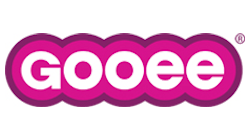Mesh networking tracks ventilators and other vital gear at London hospitals, but not an IoT light in sight
Earlier this week, when reporting on the re-emergence of smart lighting pioneer Neil Salt at a cloud computing company, we observed that one challenge facing the connected lighting industry is that lighting companies are competing with IT companies for Internet of Things (IoT) business, where the latter has the advantage of experience.
Sure, lighting companies typically team with IT companies for IoT jobs — Salt’s now-defunct Gooee did plenty of that. But the brutal reality is that luminaires are not always necessary in these matters. The sensors and communication chips that light fixtures house to detect and convey conditions such as occupancy, climate, motion, and the like could well reside on walls, pillars, ceilings, doorways, or other parts of the physical environment.
A new case study posted by Finnish mesh-networking specialist Wirepas on its website well illustrates the point.
Wirepas often works with lighting companies. For example, LEDs Magazine recently wrote a couple of stories detailing how Finnish guest-management software and controls company Mount Kelvin is using Wirepas mesh software embedded in hotel lighting electronics to help people find each other and for lighting controls.
Likewise, Dutch smart-lighting firm Ingy typically deploys Wirepas as the engine of location and asset tracking services. Earlier this year, it agreed to a volume purchase order for 100,000 licenses to the Wirepas mesh protocol, reselling some of those licenses to Dutch luminaire maker Koopman Interlight.
Prior to the volume deal, Ingy was already a dedicated Wirepas user, having deployed it at Zone College in Doetinchem, Holland, and at University Medical Center Utrecht, where Ingy/Wirepas-enabled Koopman Interlight luminaires are helping nurses locate medical equipment.
Now, in an example similar to Ingy’s University Medical Center deployment, the new Wirepas case study highlights the work of French technology firm Apitrak at three London hospitals, where Wirepas-linked asset tracking chips and sensors are again helping medical staff to locate items such as ventilators, infusion pumps, and beds.
One big difference between the Ingy installation at Utrecht and the Apitrak setup in London is that Apitrak has not embedded the hardware into the lighting. Rather it has mounted sensors and detectors elsewhere in the three hospitals, all of which are part of the UK’s National Health Service, and which tapped Apitrak last year to help cope with the COVID-19 pandemic.
Apitrak, based in Meylan, France, is not a lighting company. Rather it is a self-described provider of turnkey solutions to help companies track assets and manage inventory, among other functions. Wirepas did not identify the three London hospitals, but across them, Apitrak has put tracking tags on about 3000 items across 90,000m2 and 16 floors. It has placed about 350 “anchor tags” across fixed points; the anchor tags pick up the location of the digitally-outfitted equipment.
Missing gear in hospitals is a big problem, which in worst-case scenarios can lead to deaths. It can be financially untenable in that it prompts hospitals to purchase new gear when not really necessary. It is a source of stress both for staff and patients.
Wirepas claims that the Apitrak deployment cut the amount of surplus equipment at the three hospitals from 30% to as little as 5%. Installation took less than a month.
Not a single luminaire was involved. That is not to say that they couldn’t have been. Embedding controls and other devices in luminaires can have advantages, such as eliminating the need for separate devices and drawing on the power the feeds the lights.
“The case doesn’t include lighting,” Wirepas CEO Teppo Hemia confirmed for LEDs Magazine. “And doesn’t need to. But if used, the anchors come with luminaires without a need of separate devices and the performance can be tuned higher (no need to save power).”
Lighting-based schemes would make more sense if a hospital were also replacing its lighting.
“But how often a hospital considers updating the lighting at the same time as introducing asset tracking is a good question,” Hemia said. “Luckily with Wirepas, it is not mandatory, just an option that may make good sense if both done at the same time.”
The lighting industry’s dance into the IT business will thus continue to sometimes be a matter of competition against the technology incumbents, and sometimes a case of twirling around the floor together.
MARK HALPER is a contributing editor for LEDs Magazine, and an energy, technology, and business journalist ([email protected]).
For up-to-the-minute LED and SSL updates, why not follow us on Twitter? You’ll find curated content and commentary, as well as information on industry events, webcasts, and surveys on our LinkedIn Company Page and our Facebook page.

Mark Halper | Contributing Editor, LEDs Magazine, and Business/Energy/Technology Journalist
Mark Halper is a freelance business, technology, and science journalist who covers everything from media moguls to subatomic particles. Halper has written from locations around the world for TIME Magazine, Fortune, Forbes, the New York Times, the Financial Times, the Guardian, CBS, Wired, and many others. A US citizen living in Britain, he cut his journalism teeth cutting and pasting copy for an English-language daily newspaper in Mexico City. Halper has a BA in history from Cornell University.






